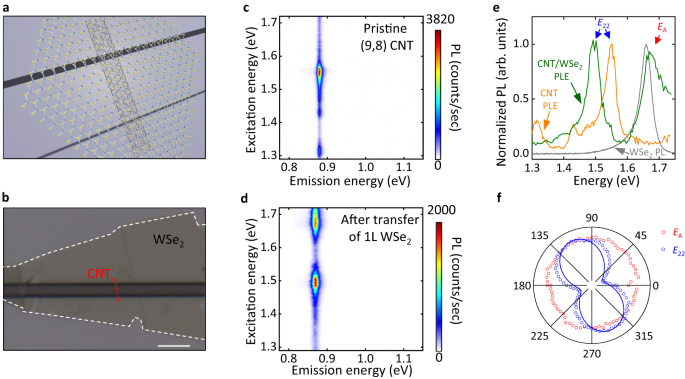Phys.org March 22, 2024
Nanomaterials exhibit excitonic quantum processes occurring at room temperature. However, low dimensionality imposes strict requirements for conventional optical excitation. Researchers in Japan found that exciton transfer in carbon-nanotube/tungsten-diselenide heterostructures occur when alignment could be systematically varied. The mixed-dimensional heterostructures displayed a pronounced exciton reservoir effect where the longer-lifetime excitons within the two-dimensional semiconductor were funneled into carbon nanotubes through diffusion. The new excitation pathway presented several advantages, including larger absorption areas, broadband spectral response, and polarization-independent efficiency. When band alignment was resonant, they observed substantially more efficient excitation via tungsten diselenide compared to direct excitation of the nanotube. They demonstrated simultaneous bright emission from an array of carbon nanotubes with varied chiralities and orientations. According to the researchers their findings show the potential of mixed-dimensional heterostructures and band alignment engineering for energy harvesting and quantum applications through exciton manipulation… read more. Open Access TECHNICAL ARTICLE

Signature of exciton transfer in a 1D-2D heterostructure. Credit: Nature Communications volume 14, Article number: 8152 (2023)